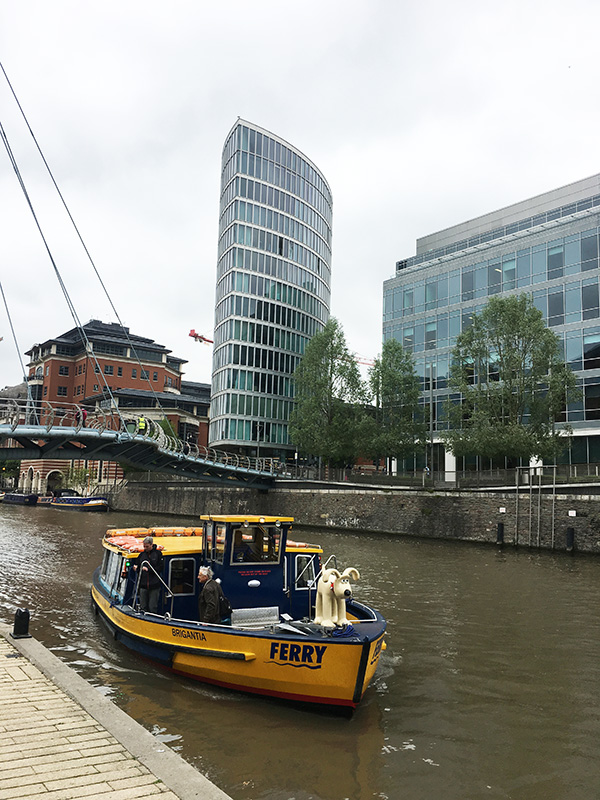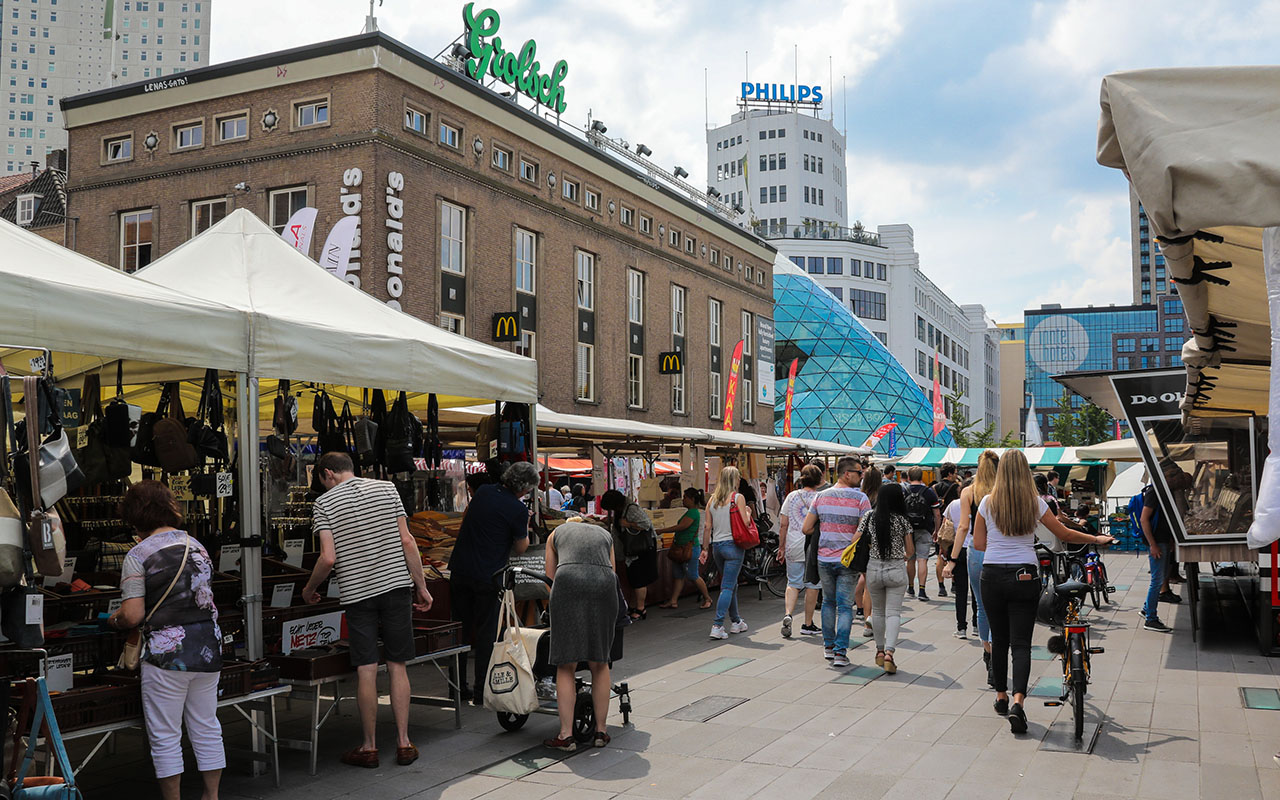The coronavirus pandemic is a major threat to many of our town centres. Nicholas Falk AoU calls for action before it is too late
Coming out of the current crisis will depend on fundamentally changing the way we work, travel and communicate if we are ever to recover. The Coronavirus pandemic could well kill off many town centres, if small shops and services fail to reopen, and even more households rely on home deliveries instead. The collapse of the Roman and some other empires were due to epidemics. So, what is to be done before it is too late?
At the time of writing the UK’s town centres and high streets are in a state of suspended animation; alas the risks and costs of running a business mean that many of the independent shops and services, such as restaurants, will not reopen, while multiples use the Internet and home delivery. As the healthier experience of cities in Germany or South East Asia shows, there are better ways, but ones which the UK has persistently avoided due to our centralised and rather amateurish system of governance, and belief that town centres are all about retail.
‘Change comes when the short-term logic of events intersects with the long-term evolution of ideas’
Thomas Piketty, Capitalism and Ideology, 2020
Facing up to the challenges
URBED’s new commission from the 1851 Exhibition Fellowship is gathering a hundred ‘tales’ from town centres large and small. As this is my tenth article for the Here & Now, instead of reviewing other people’s books I have reflected on guidance my colleagues and I have produced over the last twenty-five years. The big issue for the future is whether to rely on returning to ‘business as usual’ or to take a more radical interventionist approach. If the latter route is chosen, where will investment produce best results?
Vital and Viable Town Centres, the good practice guide that backed up Planning Policy Guidance Note 6 on retailing, drew on a large survey of planning authorities. A fifth of town centres in 1995 were then thought to be ‘declining’, while only a few metropolitan cities and historic towns thought of themselves as ‘vibrant’. At that time, the main challenge was out-of-town or edge-of-town food stores. The report contrasted the continental model of the ‘compact’ city with the American doughnut with holes where their centre used to be.
We developed a town centre health check methodology and a framework for developing strategies based on four ‘A’s – Attractions, Amenity, Access and Action. By 1997, Town Centre Management was widely established, and URBED produced Town Centre Partnerships, with a range of sponsors to show how it could be funded. On the back of 50 case studies that included Portland, Oregon, and German towns, we called for Business Improvement Districts in larger towns, and for development trusts to reuse old buildings in smaller ones. We also recommended changes to the business rate which is an even greater issue today. At that time, 12% of shops were vacant, the ‘charity shop’ was changing the face of the smaller high streets, but the ‘evening economy’ had hardly surfaced, and the internet was still a dream!

Changing trends
New forms of retailing have continued to suck life out of high streets, helped by disempowered and depleted local authorities, aggressive developers, compliant financial institutions, a love of the new and a neglect of the old. The decline of manufacturing had released large areas of land on the edge of town centres. Whereas in Germany industrial sites were reforested or turned into lakes, for example around cities such as Dortmund in the Emscher Park in the Ruhrgebiet, in the UK brownfield development was subsidised, and activity dispersed. With greater choice, customers spend most where it is easiest, for example because of free parking.
New Life for Smaller Towns in 1999 praised local initiatives such as farmers markets and festivals. Checklists under five main themes with a hundred questions in all, were reinforced by 40 loose-leaf case studies. The trends in high streets since then have continued to favour experience, not just comparison and convenience, with the rise of gyms, eating places and bars, barbershops and bookshops, and new markets. The key to success is adding value, not standing behind a counter. It is heartening that in Stroud where we live, the farmers market has kept going through the current crisis by taking orders instead, and neighbourhoods have kept community spirit alive.
Strategies for recovery
At the first Urban Summit in 2002, a new Labour government pledged to work in partnership with 24 towns and cities, and we helped a small group of civil servants to document and spread good practice, with an emphasis on creating partnerships. The resulting series of reports for the Office of the Deputy Prime Minister, Partners in Urban Renaissance, won a design award. But little was done to devolve power except for some experiments in the short-lived Regional Development Agencies. At its best, through Yorkshire Forward for example, not only were visions produced but major enhancement schemes were undertaken — such as through groups of towns in the Calder Valley including Todmorden, with its ‘incredible edibles’.
Spreading the benefits of Town and City Centre Renewal (2005) for the local government association set out a series of tools for conurbations such as Portsmouth and Leeds, so that smaller centres would not be left behind. It concluded that “The unanswered question is how far places without the attractions of universities, good public transport links, and beautiful places or settings can ever hope to compete in the ever more competitive 21st century…”. Since then the divorce of ownership from management has left most town centres adrift. This was aggravated by local authorities having to beg government for grants. How can town centre management be funded when even British mainstays such as Boots have been sold to foreign investors?
The impact of the trends, of course, depends on a centre’s historic legacy. Post-industrial towns face the greatest challenges. Market or country towns, which are far more numerous in the South than in the North (and there may be over a thousand in need of help), have wealthy residents, often retired, who can be attracted with the right offer. Geographic position matters and isolated towns can sometimes prosper, like Ludlow in the Welsh Marches. Neighbouring towns can be overshadowed, as for example Gloucester is by Cheltenham, where both would benefit from stronger collaboration. Areas where values are low may appeal to creative people, as in Stroud – now listed as the second-best place to live in the south west, but still with excessive levels of vacancy, especially when charity shops are counted in.
Immigration seems to have strengthened suburban centres that serve niche markets. For example Uxbridge, the prime minister’s constituency, has benefitted from the many offices around the centre, with a wider choice of places to eat. This was one of the success stories in Over the Edge: town centres and the economy, which in 2008 compared 50 centres in outer North and West London with centres such as Reading and Watford, which had broadened their role. Statistics on town centre employment and uses based on GIS provide a good tool for identifying comparative strengths.

Whether one town adopts the ‘vision’ of a transition town, a historic town or a learning city depends on how well different ‘stakeholders’ work together. Inspiration should be taken from Urbanism Award winners such as the former East German city of Leipzig, the Dutch city of Eindhoven and the Spanish port of Bilbao, all of which lost their main employers but recovered as great cities. Comparable British initiatives include Birmingham, which dropped its inner ring road (with EU funding) following The Highbury Initiative of 1988; Liverpool, which created a city of culture, and Bristol, where the waterfront now seems as lively as any in mainland Europe, with an influx of stylish apartments.
The greatest challenges lie in the mid-sized towns. So, in this ‘tragic’ story of apparently doomed places, how is that some high streets have managed to counter the trends or ride the tides that lead on to fortune? This can only be understood by comparing towns in the ‘leagues’ in which they compete, or their place in the ‘retail hierarchy’, to use the jargon. We need to look at the whole town — its catchment area — to see where different kinds of people live and work. Comparisons should be made with similar places, not just the next town, for example Canterbury or Norwich with York, Blackpool or Hastings with Scarborough, Wolverhampton or Sunderland with Nottingham. Not all development should be welcome. The British seem slow at learning from others, so The Academy of Urbanism has a crucial role to play.
Five steps to rapid recovery
As in a war, strategies are needed to mobilise the necessary resources where they will have most effect. We should recall that a coalition government commissioned the Beveridge Report in 1942, well before the war had ended, to give people hope of a better life. Recovery from the pandemic will take time so it needs to be phased. There are proven ways of reviving town centres which follow the four ‘As’ first set out our in Vital and Viable Town Centres, but reinforced with agency and animation. Suitably refined, these could form the basis for ‘quality deals’ to meet 21st century priorities such as public health and climate-proofing.
Here are a few suggestions:
- Action Get Smart: Local authorities should use the power of digital technology to promote recovery. Mapping will help in setting priorities, for example identifying isolated and disadvantaged areas. Shops and eating places that offer good service should be highlighted. The URBED Trust’s new report Smart Cities: learning from the pioneers shows what can be done by leaders such as Cambridge, Freiburg and Grenoble.
- Access Reallocate space: Priority for should be given to ‘active travel’ (walking and cycling) which means ‘taming’ cars and promoting better integrated public transport. We should reallocate road space, as Copenhagen did, but also make short-term parking easier or ‘free after 3.00’. Local authorities could take back the bus services and promote better local rail services in Metro areas with integrated transport hubs as Barnsley has done. Funding could come from charging out-of-town stores for parking when the business rate is reassessed.
- Attractions Open empty shops: Redundant peripheral retail premises and surplus car parks need to be redeveloped as homes, workplaces and community hubs or social spaces. Local authorities should take over key buildings if they lie empty too long, as happened in bomb damaged Comprehensive Development Areas after the Second World War.
- Amenity Promote special places: Streets and neighbourhoods with a distinct character, for example clusters of shops or services or waterfronts, should be boosted. Festivals and campaigns can help. Environmental upgrades should counter the lure of out-of-town retail parks but go beyond expensive facelifts that are like ‘putting lipstick on a corpse’. Spreading the benefits of regeneration must reignite civic pride as Stroud has done with its pioneering farmers market. .
- Agency Re-empower local authorities: Most important of all government must as a matter of urgency release the resources for town centres to revive by recasting parking charges and property taxes. The time is ripe to rethink what town centres are for, and for a multitude of pilot projects. Partnerships should be set up to promote new uses for underused space and lessons shared through Beacon Council Schemes
Above all a new approach is needed to property. Where town centre development is no longer viable, retailing will have to contract so better uses can take over. This requires government to play a more proactive role. Publicly-owned land could be pooled, as it is in Copenhagen and Hamburg, with compulsory purchase orders used as a threat. Government is getting interested again in development corporations, and the reassessment of business rates promised for 2021 must not be deferred.
As the outlook for post-industrial towns and cities may seem bleak, a national priority should be to ‘reinvent’ places associated with the first Industrial Revolution, and breathe life back into them. A cross-sectoral action plan to follow up the UK2070 Commission report Making No Little Plans could provide the impetus for rebalancing Britain. A good place to start would be with the network of 23 or more Key Cities such as Gloucester and Sunderland, as well as historic cities such as Oxford that need to attract visitors again. So who will set up the first task forces?
Nicholas Falk AoU is executive director of The URBED Trust and is writing a new book on Smarter Urbanisation on how cities can change direction before it is too late.






